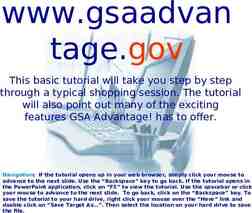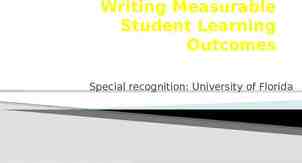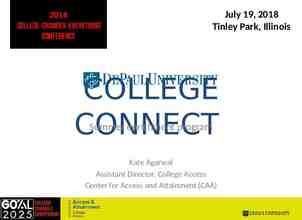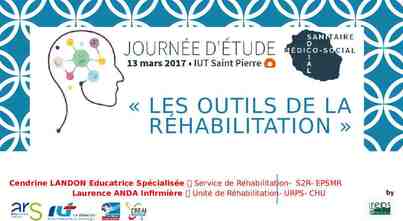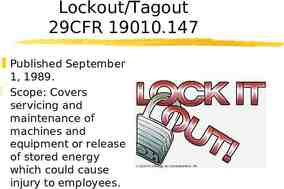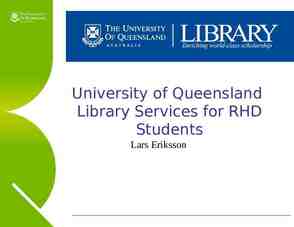Annual Mandated Training 2023-2024 Paul Tzovolos, Executive Director 1
44 Slides962.62 KB

Annual Mandated Training 2023-2024 Paul Tzovolos, Executive Director 1

designed to provide the annual mandated training, included but not limited to Civil Rights, for all North River Collaborative staff. Purpose of Training All questions regarding the information within this PowerPoint should be directed to your Administrator. You are required to sign a document at the end of this training indicating that you have received the information about each topic; that you understand the information provided; and that you know who to contact to ask clarifying 2

Non-Discrimination and Harassment Policy and Complaint Procedure Marie Grable Sex Discrimination and Harassment Policies and Procedures Marie Grable Anti-Bullying and Cyberbullying Prevention Policy Andrew Manning / Abby Horbach Mandated Reporting Beth Litchfield / Deni Howley Physical Restraint Paul Tzovolos Student Record and Confidentiality Ryan Morgan Social Networking Diane Baxter Universal Precautions for School Settings Kate Stevens / Meredith Daly Reporting Changes of Status Kelli O’Brien McKinnon Employee Conduct Marie Grable / Paul Tzovolos Organizational Chart and Problem Resolution Ellen George NRC Personnel Policies and Procedures Handbook Agenda 3

Non-Discrimination and Harassment Sexual Discrimination and Harassment Presenter: Marie Grable, Assistant Executive Director 4

Non-Discrimination and Harassment Discrimination includes conduct that excludes a person from participation in, denies an individual the benefits of, or otherwise subjects an individual to different treatment on the basis of race, color, national origin, religion, sex, disability, age, sexual orientation, military service, gender identity or expression, pregnancy and pregnancy-related medical conditions, or any other classification protected by law. For students, it includes different treatment on the basis of homelessness and limited English-speaking ability. Harassing conduct involving these bases can be a form of discrimination. Harassment defined as unwelcome conduct, whether verbal or physical, that is based on a person's race, color, national origin, disability, age, sex (under state law), sexual orientation, military service, gender identity or expression, pregnancy and pregnancy-related medical conditions. For students, it includes unwelcome conduct on the basis of homelessness and limited English-speaking ability. 5

Non-Discrimination and Harassment Complaint Procedure NRC Employees will: Report any instances of suspected discrimination and harassment to their building Principal, Program Coordinator, or the NRC Civil Rights Coordinator Marie Grable, Assistant Executive Director (781-8786056). You will be able to raise concerns and file formal complaints without fear of reprisal or retaliation. NRC Administrators will: Promptly investigate all employee concerns and formal complaints following procedures outlined in the NRC Handbook of Personnel Policies & Procedures. Questions/Concerns: Any employee with questions or concerns about discrimination or harassment in the workplace is 6

Sexual Discrimination and Harassment Under Federal law, sexual harassment means conduct on the basis of sex that satisfies one or more of the following: An employee of the recipient conditioning the provision of an aid, benefit, or service of the recipient on an individual’s participation in unwelcome sexual conduct (“quid pro quo harassment”); Unwelcome conduct determined by a reasonable person to be so severe, pervasive, and objectively offensive that it effectively denies a person equal access to the recipient’s education program or activity (“hostile environment harassment”); or “Sexual assault” as defined in 20 U.S.C. 1092(f)(6)(A)(v), “dating violence” as defined in 34 U.S.C. 12291(a)(10), “domestic violence” as defined in 34 U.S.C. 12291(a)(8), or “stalking” as defined in 34 U.S.C. 12291(a)(30) 7

Sexual Discrimination and Harassment Policies and Procedures Complaints and Reports of Sexual Harassment Upon receiving actual notice of alleged sexual harassment without a formal complaint, staff members must notify the Title IX Coordinator, Marie Grable, Assistant Executive Director (781-878-6056). The Title IX Coordinator must then contact the complainant within five school days of receiving the complaint and do the following: Discuss and offer supportive measures; Consider the complainant’s wishes with respect to supportive measures; Explain that supportive measures may be received with or without filing a formal complaint; Determine whether the complainant wishes to file a formal complaint; and Explain to the complainant the purpose of filing a formal complaint. The Title IX Coordinator must document in writing the supportive measures offered/provided or why no supportive measures were offered/provided. Complainant and respondents must be offered supportive measures even if they do not file a formal complaint. Please refer to the NRC Policies and Procedural Manual for additional information. 8

Anti-Bullying and Cyberbullying Prevention Policies Presenters: Andrew Manning, Program Coordinator & Abby Horbach, Assistant Program Coordinator North River School 9

Student Anti-bullying & Cyberbullying Bullying & Cyberbullying Repeated use of a written, verbal, or electronic expression or a physical act or gesture or any combination thereof, directed at a victim that: 1. causes physical or emotional harm to the victim or damage to the victim’s property; 2. places the victim in reasonable fear of harm to himself or of damage to his property; 3. creates a hostile environment at school for the victim; 4. infringes on the rights of the victim at school; or 5. materially and substantially disrupts the education process or the orderly operation of a school. 10

Mandated Reporting Presenters: Beth Litchfield, Program Coordinator Social Work Internship & Deni Howley, Program Coordinator Behavioral Health Initiatives 11

Mandated Reporting 51A Chapter 119, Section 51A requires that school personnel immediately report to the Department of children & Families (DCF) whenever there is “reasonable cause” to believe that a child under the age of 18 is suffering physical and/or emotional injury from abuse and/or neglect. A written report is submitted within 48 hours. All NRC employees are mandated reporters and may file a report independently if they feel it is necessary. All reports are held in strict confidence and no person required to report shall be held liable in any civil or criminal action. Any employee, upon identification of possible child abuse/neglect, shall immediately inform the Program Coordinator, Assistant Executive Director, and/or Executive Director. The Program Coordinator shall collect information from all involved personnel: nurse, teacher, therapist, counselor, LEA liaison etc. The Program Coordinator shall inform the Executive Director before any action is taken. Please refer to the NRC Policies and Procedural Manual for additional information. 12

Physical Restraint Presenter: Paul Tzovolos, Executive Director 13

Physical Restraint Physical Restraint Direct physical contact that prevents or significantly restricts a student’s freedom of movement. An extended restraint is one that lasts longer than 20 minutes. Not Physical Restraint Brief physical contact to promote student safety, providing physical guidance or prompting when teaching a skill, redirecting attention, providing comfort, or a physical escort. Time-Out A behavioral support strategy in which a student temporarily separates from learning activity or the classroom, either by choice or by direction from staff, for the purposes of calming. During time-out, staff is present, continuously observing the student and should cease as soon as student is calm. 14

When may you not use Physical Restraint? As a standard response for any student. As a means of discipline or punishment. As a response to property destruction, school disruption, refusal to comply, or verbal threats. When the student cannot be safely restrained including medical contraindications. Also The use of restraint may not be included in behavior plans or IEPs. Restraint is only to be used as a LAST RESORT 15

Proper Administration of Physical Restraint Only staff who are CPI or Safety Care trained may administer a physical restraint (not including reasonable intervention to protect a student from immediate danger). Have an adult witness it possible. Use only the necessary amount of force to protect the student or others Make sure the student is able to breathe and speak. If the student indicates that’s/he cannot breathe the restraint must be stopped. Monitor physical well-being, monitor respiration, monitor skin color. If student experiences physical distress -- release restraint and seek medical assistance immediately. Know students’ medical and psychological limitations and behavior intervention plans, including known or suspected trauma history. 16

Restraint Prevention and Follow-Up Prevention Behavior Intervention Plans Sensory Tools Limiting of Environmental Input and Attention Consultation with Service Providers and Family Members Identification of Antecedents Use of Alternative Means of Redirection or Reinforcement for Safe Behavior Therapeutic or Social/Emotional Interventions Follow-Up Following every restraint action taken, the circumstances should be discussed with the student, and with others, as appropriate. Ask: “How can we avoid this happening again?” Give the parent and/or student the opportunity to provide feedback and input verbally or on the reporting form. Provide behavior planning to avoid the problem behavior(s) that caused the unsafe situation. 17

Student Record and Confidentiality Presenter: Ryan Morgan, Program Coordinator Independence Academy 18

Student Records and Confidentiality FEDERAL LAW The Family Educational Rights and Privacy Act of 1974 (FERPA); Individuals with Disabilities Education Act (IDEA); Health Insurance Portability and Accountability Act (HIPPA) FERPA protects the privacy of student education records and gives parents certain rights with respect to those records. STATE LAW All student records maintained in the school must be private and secure. Computerized systems should be electronically secure. School personnel should be aware of the provisions of 603 CMR 23.00 and M.G.L. c. 71, § 34H 19

Parent Access to Student Records Parents (and students who are 14 or older) have the right: to inspect their child’s file within two weekdays of a request, to inspect their child’s file prior to any meeting regarding an IEP, to obtain copies of their child’s record at no charge, to request that the information in their child’s file be changed if they believe it to be inaccurate or if it violates the student’s rights. Parents/students may also have school records inspected by a third party. A third party must have prior written consent from a parent authorizing a release of records except in limited situations such as: Court Order/lawfully issues subpoena DCF or State and local authorities within the juvenile justice system First responders in emergency situations 20

Non-Custodial Access to Student Records A non-custodial parent is eligible to obtain access to the student record unless: the parent has been denied legal custody or has been ordered to supervised visitation, based on a threat to the safety of the student and the threat is specifically noted in the order pertaining to custody or supervised visitation, or the parent has been denied visitation, or the parent's access to the student has been restricted by a temporary or permanent protective order, unless the protective order (or any subsequent order modifying the protective order) specifically allows access to the 21

Access to Student Records Authorized school personnel who have access to student records include: school administrators teachers counselors other professionals working directly with a students in an administrative, teaching, counseling or diagnostic capacity administrative office staff and clerical personnel evaluation teams 22

Helpful reminders. üBe sure to keep confidential information in a secure location. üDo not discuss confidential information in a public space (hallway, cafeteria, faculty room). üDo not use email to communicate confidential information. üRemember that Educational Assessment B forms are part of the student’s record. üRemember that all information, including personal notes and samples of student work shared at Team meetings become part of the student record. 23

Student Records. The Student Record consists of the transcript and other minimal data necessary to reflect a student's educational progress. This record is maintained for 60 years. The Temporary Record consists of information in the records not contained in the transcript. (e.g., standardized test scores, extracurricular activities, special education records, evaluations by teachers, counselors, and other staff.) This record is maintained for 7 years from exiting school. Sole Possession Records - Records kept “in sole possession of the maker” are not considered part of educational records The student record does not include notes, 24

Social Networking Pretention: Diane Baxter, Technology Coordinator 25

Social Media A social media policy is part of North River Collaborative's business code of conduct that outlines for employees how they should represent themselves and NRC on social media. Be Respectful Be Honest & Accurate Post only appropriate and Respectful Content Laws require that public employees who send, receive, or maintain records in their capacity as public employees must retain, disclose, and dispose of such records in compliance with strict public records law. Staff members are encouraged to communicate with students and parents on educational matters only, and only through Collaborative-based resources, such as Collaborative-provided email or web portal accounts, where such records are retained and archived through NRC’s technology department. 26

Hold for Diane 27

Universal Precautions for School Settings Presenters: Kate Stevens, Program Coordinator Learning Center Meredith Daly, District Services Coordinator 28

Universal Precautions for School Settings Universal precautions refer to the usual and ordinary steps all school staff need to take in order to reduce their risk of infection with HIV, the virus that causes AIDS, as well as all other blood-borne organisms (e.g., Hepatitis B or Hepatitis C virus). They are universal because they refer to steps that need to be taken in all cases, not only when a staff member or student is known to be HIV infected. They are precautions because they require foresight and planning and should be integrated into existing safety guidelines. 29

Universal Precautions for School Settings Appropriate equipment (mops, buckets, bleach, hot water, hand soap, disposable towels and latex gloves) must be readily available for appropriate staff who are responsible for the clean-up of body fluid spills. Treat human blood spills with caution. Clean blood spills promptly. Inspect the intactness of skin on all exposed body parts, especially the hands. Cover all open cuts or broken skin or ask another staff member to do the clean-up. Latex-free gloves are recommended for an added measure of protection but are not essential if skin is intact. Clean up blood spills with a solution of one-part household bleach to ten-parts water, pouring the solution around the periphery of the spill. Disinfect 30 mops, buckets, and other cleaning equipment with

Reporting Changes of Status Presenter: Kelli O'Brien McKinnon, Executive Assistant & HR Coordinator 31

In order to keep employees’ records current, it is the employee’s responsibility to notify the Administrative Office, in writing, whenever there is a change in the employee’s record. Then information will be shared with the Business Office to make needed changes. Reporting Changes of Status Examples of changes may include: Name Home address and mailing address Telephone numbers Family status (marriage, divorce, children) Emergency contact information Beneficiary update Tax exemptions Benefit elections based on an event (change in marital status, birth/adoption of child, spouse retirement, etc.) Licensure, certification, degree change 32

Employee Conduct Presenter: Paul Tzovolos, Executive Director 33

Employee Conduct All NRC employees are expected to conduct themselves in a professional manner in a continuing commitment to the quality and efficiency of the educational programs of NRC. Examples of conduct or omissions that are not acceptable include, but are not limited to: Use of narcotics, alcohol, or controlled substances at work-related events; Reporting to work under the influence of narcotics, alcohol, or controlled substance; Inappropriate dress or presentation; Possession of dangerous or unauthorized 34

Employee Conduct. continued Examples of conduct or omissions that are not acceptable include, but are not limited to: Falsification of any work-related or student-related record; Placing a student in danger through neglect or misconduct; Inappropriate use of computers, vehicles, or other NRCowned equipment; Lack of attention to legal responsibility for the safety and welfare of students; Failure to maintain professional confidences, including student records; Failure to know and observe state, federal, and NRC policies and regulations; Criminal, unethical, or unsuitable conduct; Frequent absences or tardiness, and failure to notify supervisor prior to event. Etc. 35

Organizational Chart & Problem Resolution Presenter: Ellen George, Director of Business Services 36

Organizational Chart & Problem Resolution Organizational Chart The Board of Directors retains the right to control, maintain, operate, and supervise the educational activities of the NRC. The Executive Director is designated as the Board’s agent with respect to all matters pertaining to Collaborative administration. Public Statements & Communication The Executive Director, or designee, has the sole responsibility for handling public statements to the media and speaking with reporters for local or national publications on issues pertaining to the Collaborative. The Executive Director must approve of all appearances by an employee as a representative of the Collaborative or professing to speak on behalf of the Collaborative. The Executive Director (or designee) must approve all press releases, advertising, online presence, curriculum, publications, brochures, and other collateral and give permission before material is disseminated. 37

Organizational Chart & Problem Resolution Complaint Resolution Procedure A three-level procedure is used in cases where an employee has a complaint, progressing to a higher level if there is no resolution. Level 1: Meet with direct supervisor concerning the complaint. Level 2: Meet with the Assistant Executive Director, Marie Grable or designee. Level 3: Meet with the Executive 38

Hold for Ellen 39

Handbook of Personnel Policies & Procedures Highlights Legal Mandates Concerning Employment Payroll/Salary Employee Conduct Work Schedule Paid / Unpaid Leave Summary of Benefits Reimbursement / Expenses Separation of Service 40

Handbook of Transportation Policies & Procedures Highlights General Information Substance Abuse Policy Responsibilities of the School Vehicle Driver / Monitor Daly Operations School Closings / Delays / Early Dismissals 41

Conflict of Interest Law for Municipal Employees Please review summary and certify that you have read and understood all components of the Summary of Conflict of Interest Law for Municipal Employees First and Last Name NRC Program Position Date Completed Signature 42

NRC Technology Acceptable Use Policy Highlights Expectation of Privacy User Responsibility Prohibited Uses of the Network Classroom-Based Computer Use Internet Safety and Children’s Internet Protection Act Disclaimer of Liability The use of the Network is a privilege, not a right, which may be revoked at any time 43

Please Remember to Sign the Annual Training Verification Signature Page FY2023 Have a Great Year 44

